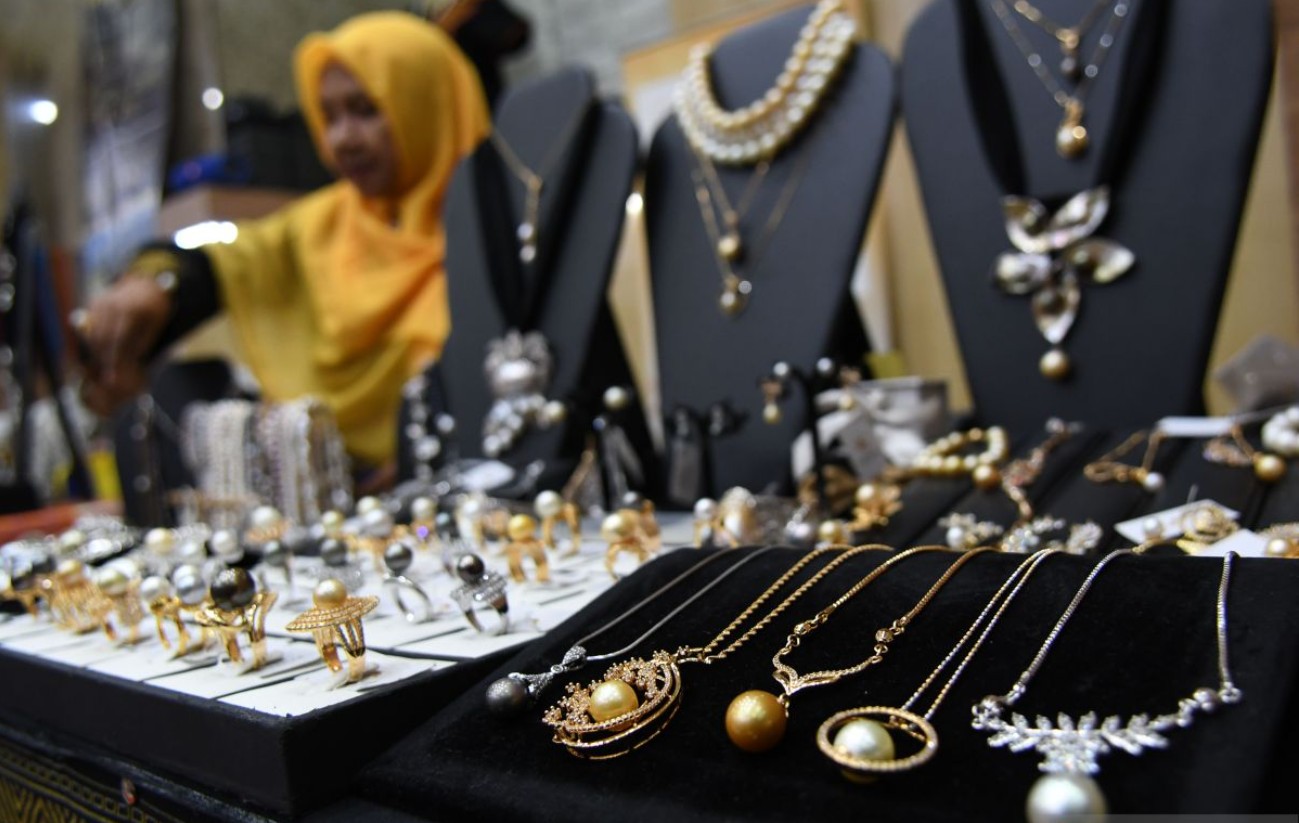The imposition of a 19% import tariff by the United States government has surprisingly had a positive impact on Indonesia’s jewelry exports.
Trade Minister Budi Santoso stated that the reciprocal tariff policy implemented by US President Donald Trump has indirectly increased the competitiveness of Indonesian jewelry products in the American market.
“After the Trump tariffs were imposed, we actually received a lower tariff burden. As a result, our jewelry exports to the US increased,” said Budi during a visit to the PT Karya Tangan Indah (John Hardy Jewellery) gallery in Mambal, Badung, Tuesday (29/7/2025).
Although the 19% tariff seems high, Indonesia still enjoys the lowest rate among ASEAN countries. Neighboring countries like Thailand, Vietnam, Malaysia, and Laos are subject to tariffs of 36%, 20%, 25%, and 40% respectively.
“Our jewelry exports are doing well—not only to the US, but also to Europe. Both gold and silver are in demand in international markets,” he added.
The government is actively working to expand export markets beyond the US. One promising market that has been explored is Australia, where a trade agreement with Indonesia has been finalized.
“In addition to the US, we’re entering the Australian market as well. Since the agreement is complete, our exports can enjoy a 0% tariff there. This is part of our strategy to expand into new export markets,” explained Minister Budi.
He also expressed hope that Bali could become a new production hub for jewelry, as Indonesia becomes more competitive compared to other producer countries.
The US tariff policy could open the door for investment to shift from competitor countries like Thailand to Indonesia.
CEO of PT Karya Tangan Indah, Hendarto Gunawan, described the US tariff policy as a golden opportunity for Indonesia’s jewelry industry to compete globally.
He also mentioned the potential reintegration of MSMEs in Bali into the production process, as they were previously involved.
“The Minister said that if production increases, we could re-engage MSMEs in Bali. Previously, 70 percent of production involved small craft centers, with the rest handled by large manufacturers,” said Hendarto.
Meanwhile, President Donald Trump stated during a press conference in Scotland with UK Prime Minister Keir Starmer that countries without trade agreements with the US would face tariffs ranging from 15 to 20 percent.
However, Indonesia, which has undergone several rounds of negotiations, is still subject to a 19 percent tariff.
Coordinating Ministry for Economic Affairs Secretary Susiwijono Moegiarso said the government is still waiting for an official statement from US trade authorities.
According to Tempo.co, “That’s what we want to clarify—what exactly is meant by the 15–20 percent range, because there’s no official document yet,” said Susi at an event in Jakarta.
He emphasized that any tariff changes must go through formal trade agreements, not just public statements or social media posts.
According to Susi, countries aiming to reduce tariffs must significantly increase imports of US products.
Japan, for instance, plans to add up to US$550 billion in imports, while Europe is committing up to US$1.35 trillion. Indonesia has pledged to purchase an additional US$19.5 billion in US products.
“How can other countries do nothing and still get an average 15 percent tariff? That just wouldn’t be fair,” he asserted.
Sources: Detik.com, Tempo.co
Feat Image: via AntaraNews//Aditya Pradana Putra

